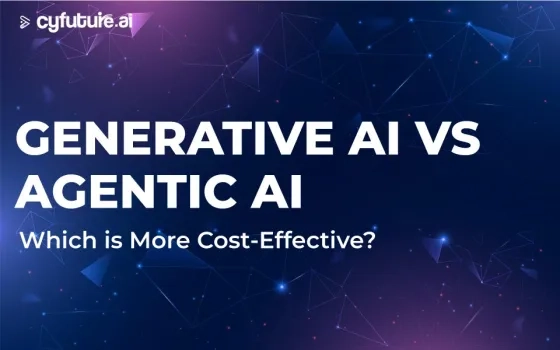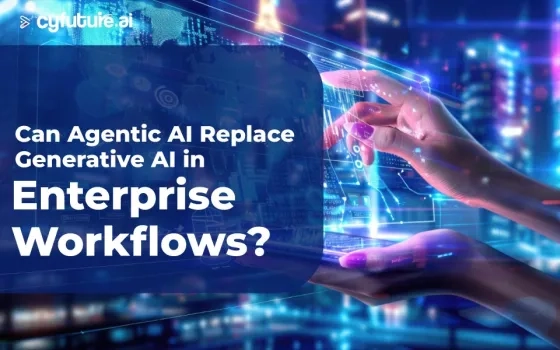Expeditions with Artificial Intelligence (AI)
Himadri Sikhar Pramanik, Rupa Misra
As capabilities in machine learning and allied technologies proliferate in an accelerated manner organizations are in constant pursuit to realize benefits from Artificial Intelligence (AI) through meaningful deployments. This is amidst global and relevant debates around -What may be the possibilities of artificial intelligence capabilities and its deployments?
AI adoption is open for evaluation at multiple levels including macro considerations like economy, regulations, labor, public policy, and the future of work among others. The adoptive sentiments, exuberance, alongside algorithmic co-work, technology mediations in governance, transformation of jobs, human-computer exchanges are palpable across citizens and global workforces at varied levels. Amidst meso-considerations we observe how large organizations and global institutions embrace the power of artificial intelligence. This practitioners’ perspective focuses on considerations for global organizations in light of AI adoptions. Interestingly, the present trend indicates industrial adoptions ahead of academic research in matters of machine learning and intelligence. Until 2014, significant machine learning models were released by academia. In 2022, there were 32 significant industry-produced machine learning models compared to about three by academia.[1] It is worthwhile to explore what motives and results drive such heightened interests?
Policy makers globally are catching up with regulations dealing with explainability, reduction of ambiguity and complexity. AIAAIC database, tracking incidents on ethical misuse of AI indicates the number of AI incidents and controversies has increased in acceleration. [2] Notable incidents in 2022 included deepfake video of global leaders and associated consequences. An AI Index analysis of legislative records of 127 countries indicates bills containing “artificial intelligence” passed into law grew from 1 (in 2016) to about 37 (in 2022). Analysis of the parliamentary records on artificial intelligence in 81 countries shows mentions of AI in global legislative proceedings increased more than six times since 2016. [3]
In view of governance associated with AI adoption to steer optimal scenarios, there is the rise of purposeful debates globally. These span across governments, industries, technology providers, policy makers, independent advocacies, and academics among others. These are indicative towards the need, the extent, and the modalities to ‘govern’ AI and its developments, especially in scenarios of human interface and welfare. The recently passed EU AI Act by the European Parliament [4] is comprehensive and proposes a risk-based governance framework for AI. It is expected that many progressive nations are likely to consider similar regulations. Contextual AI governance frameworks will need to rest on a set of foundational yet multi-dimensional principles relevant for industries, economies, societies, and wider evolution of humanity including paradigms of trust, transparency, explainability, fairness commitment, risk categorization, built into technology proliferations and subsequent diffusion.
Governance guidance should not be seen as limiting for global organizations in endeavors to capitalize the power of artificial intelligence and machine learning. The need for governance and structured mechanisms to evaluate considerations necessarily ensues alongside disruptive technology adoptions and is rooted in meaningful purpose and sustainability. Encouragingly, the companies that have adopted AI continue to pull ahead. Number of organizations adopting AI in 2022 has nearly doubled since 2015. AI adopting organizations reported cost effectiveness, revenue growth and ability to harness new capabilities.
We position our views for organizational leadership, as they embark on expeditions to embrace artificial / machine intelligence. Figure 1 represents a comprehensive yet non-exhaustive consideration set in the realm of organizational strategy construction. The enlisted considerations may be enhanced further through organizational learning and transformations. These perspectives are of particular significance in adopting artificial intelligence as a core competency.
Operating considerations are prime in evaluating an organization's locus of AI adoptions. Assessment of organizational fitment is necessary to identify areas where AI may be most impactful. Which key processes can be better enabled with AI? – What kind of transformation is likely? – What kind of benefits may be expected through embedding artificial intelligence? Additionally, there needs to be considerations on how employees, customers and wider stakeholders respond to AI enabled work processes and outcomes. In addition to fitment, focus on capabilities and associated risks is necessary - specifically in operating and wider context. Beyond these inherent organizational dynamics there needs to be a learning focus around benchmarks of AI adoption, study of successful use-cases in deployment, and derivative impacts on ecosystem including a clear understanding on how AI capabilities may change nature of competition and collaborations for the organization. Alongside, focus on fairness, accountability, purpose, trust, ethics, and explainability are prime for meaningful adoptions.
Figure 1: Key Considerations for Organizations Embracing AI and ML

Adoption of AI needs to be strongly coupled with value considerations with efforts to measure returns on investment for AI. Value derivates may manifest in many forms including capitalizing on emerging new business models around future of work, harnessing capability, establishing algorithmic protocols for employment, contracts, and governance. It is imperative here for organizations to link value derivatives with people, planet, peace, and partnership considerations beyond prosperity motives for sustainable development. Research on AI deployment and impacts on sustainability are ambivalent. AI is both helping and impacting the environment - today. While some AI training run emitted high carbon, new reinforcement learning models, neuromorphic capabilities focus on AI systems to optimize energy usage. Even beyond environmental impacts, an assessment of fairness, accountability, trust, social inclusion, skilling, and ethics are important in view of far-reaching implications of AI on society, economy, governances in general. Awareness to make meaningful leadership decisions around AI is closely linked with these value considerations and more. Ability to make meaningful transformations with AI including generative models are grounded in strategic considerations.
Organizations adopting AI need to understand technology proliferation constantly sensing them as a dynamic capability. Such capabilities are derivative of research and innovation, standard formulations, intellectual property, forging of ecosystems and collaborations. Adoption of AI without awareness of regulatory and community responses is likely to be misplaced that strategic decisions need to avoid. Considerations discussed here and included in figure 1 need to be studied alongside strategic decisions to embed, enable and reimagine work processes with powerful disruptive technologies.
Observations across global organizations as evident from research indicate how these considerations are transient and leads to a continuous dynamism in decision-making. The considerations on AI adoption result in varied focus across organizational initiatives, transformations, or new ways of working with associated budgets and resources. Organizational leaders need to have a constant governance on these initiatives. Figure 2 represents a visualization of organizational initiatives around AI and ML. This helps leaders draw out future trajectories.
The artificial intelligence initiatives need to be understood longitudinally over a period to orient organizational focus considering associated risks and value gains. Continuity of focus relates to investments over time and helps classify these initiatives as emergent or established. These initiatives are likely to deliver value (return on AI investments) over time. The value derived may not always be quantifiable because of inherent complexities and limitations to attribute linkages between gains and investments. Abilities to understand the nature of gains help organizations know which initiatives, when deployed, generates exponential value over the ones generating limited gains. This may help organizations orient focus and future investments accordingly. However, this portfolio view needs to be better understood alongside the nature of risk exposure for each of the initiatives. The indicated initiative portfolio visualization in figure 2 helps leaders orient focus while embracing artificial intelligence and machine learning. Over time organizations gain maturity, and they are also impacted by the dynamism of operating conditions. Thus, the portfolio view is transient calling for agility in reorienting focus. Organizations are likely to steer towards scenarios of greater gains across emergent and established initiatives having low risks. The assessment of initiatives is transient with associated dynamism in focus alongside gains and risks.
Figure 2: Portfolio Visualization of Organizational Initiatives around AI and ML

Research and practice indicate following as some of the key considerations for global institutions to keep in mind during their pursuit of AI ambitions.
- Continuous value sensing of possibilities with AI and associated disruptive technologies.
- Map possibilities with potential and contextual industrial use cases relevant to the organization and its ecosystem. Evolution of these use cases, bounded within strategic considerations, will lead to meaningful transformations.
- A portfolio-based strategy to identify the organization wide programs basis evaluation and balance of value creation, return on investment and associated risks. Continuous recalibration is necessary, to ensure strategic responses are always relevant.
- Mindful investments in creation of a contextual and overarching AI governance framework – laying out ethical principles and guidelines towards responsible AI adoption.
References
[1] https://aiindex.stanford.edu/report/
[2] https://www.aiaaic.org/
[3] https://aiindex.stanford.edu/wp-content/uploads/2023/04/HAI_AI-Index-Report-2023_CHAPTER_6-1.pdf
[4] https://www.europarl.europa.eu/news/en/headlines/society/20230601STO93804/eu-ai-act-first-regulation-on-artificial-intelligence
Author Profile
Himadri Sikhar Pramanik steers strategic research advisory and insights exploring technology adoption and innovation, purpose, ecosystems, and sustainability orientations across large global organizations. He works in research advisory consulting roles, collaborating with leaders globally. His consulting and research focus includes - business process re-engineering, macro quality models, strategy deployment, digital transformation, program management, design thinking, agile methods, organizational assessments, analytics, data visualization, benchmarking, systems thinking, complexity and metrics. He is a trusted advisor with ~20 years of progressive consulting and research experience. Himadri is a certified organization assessor, also certified in data centricity. He has worked with government functions towards formulating citizen-centric service delivery and excellence. Himadri takes keen interest in writing, public speaking, painting, storytelling, and IP creation. He has authored 4 patents and multiple thought leadership publications including peer-reviewed high impact journals, global conferences, and books. Winner of multiple awards, Himadri had speakership invitations at global conferences, seminars, industry bodies, ideathons, and global academia. He is an engineer, an MBA and has a doctoral fellowship (PhD).
Rupa Misra is a core member of the executive leadership group of Corporate Research and Innovation (R&I) at leading IT services organization. She is currently part of the CTO Office working on strategic programs to further the research and innovation agenda for the organization. Rupa has completed 26 years of her professional career in the IT Industry and has essayed a variety of leadership roles across technology, business, research, and innovation. She headed initiatives globally to integrate meaningful innovations with start-ups, global academia, and large organizations. Her areas of experience and expertise include strategy, enterprise innovation, innovation management, communications, branding and marketing, partnership management, software product development, business development and consulting. Rupa has a background in Physics and Electronics.


















